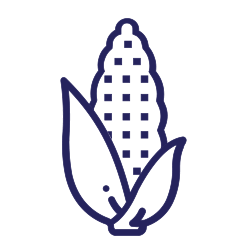The Manitoba Corn Initiative: Optimum residue management in corn
Crop Types
- Corn
Collaborating Locations
University of ManitobaBackground
An important concern of both new and experienced corn growers in Manitoba is how to manage the large amount of residue after corn harvest. This issue is a potential barrier to the wider adoption of corn in Manitoba. Intensive tillage is commonly practiced for corn production. This practice consumes large amounts of energy and time. It also leaves soil vulnerable to erosion. Alternative tillage practices, such as strip tillage and vertical tillage may alleviate some of these issues, while still warm up the soil more quickly than in zero-tilled fields. The fit of alternative tillage practices may vary in different growing regions of Manitoba.
Objectives
This project is a part of the larger Manitoba Corn Initiative - Corn Agronomy, fertility and agrometeorology. Overall objectives for the program include:
- 1. Identify the best crops to grow prior to corn in a rotation
- Evaluate fertilization strategies for corn grown after canola
- Conduct an economic analysis of optimal crop rotations involving corn
- Identify optimum corn residue management strategies.
- Evaluate fertilization strategies for alternative tillage systems for corn production
- Evaluate the corn heat unit system for Manitoba
Summary
Four tillage practices were compared:
- conventional double disc
- vertical till high disturbance
- vertical till low disturbance
- strip till
At harvest, soybean grain yield was not statistically different among the corn residue management treatments. Both vertical tillage and strip tillage show promise as alternatives to managing corn residue with a double disc in Manitoba. However, when interpreting the findings of this study it is important to note that all the siteyears were conducted on sandy soils. Further research on heavy clay soils is still needed.
Key Takeaways
- During soybean emergence, soil temperature at planting depth showed no differences among tillage treatments
- At planting, all treatments had the minimum soil moisture required for soybean emergence, no difference in emergence or plant stand was found
- Economic analysis showed time and cost savings for strip till
- Strip tillage and vertical tillage are promising alternatives to double disc for managing corn residue









